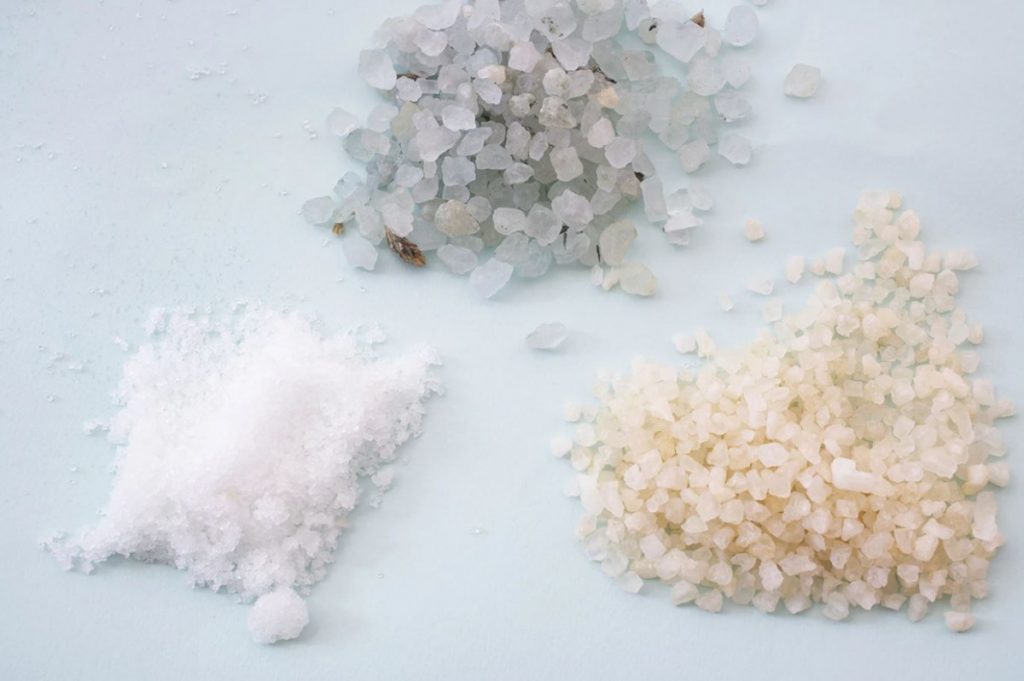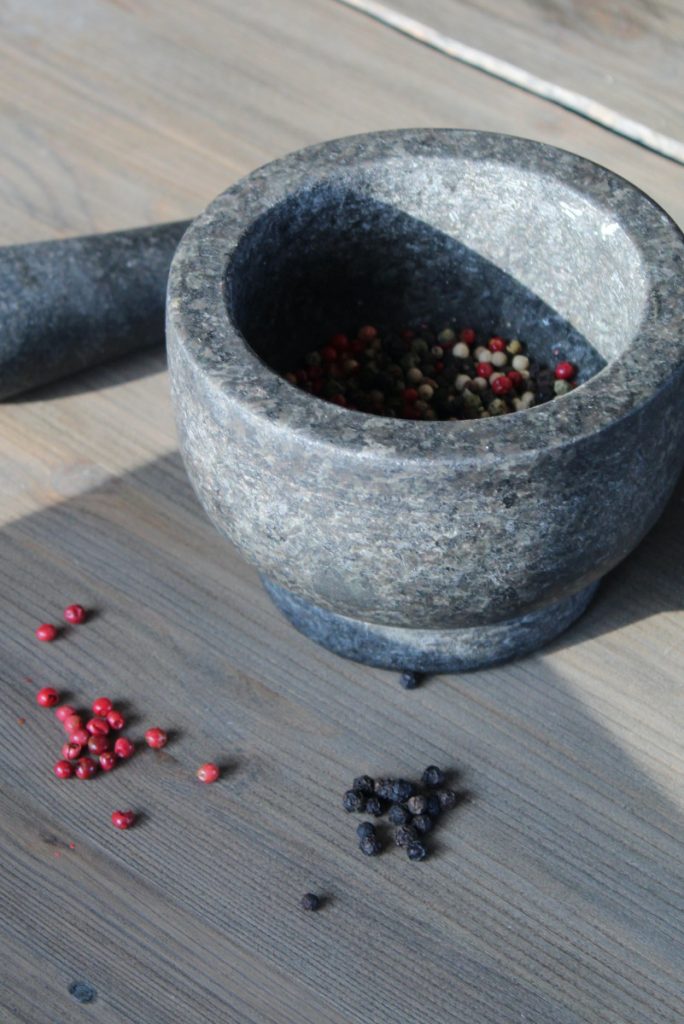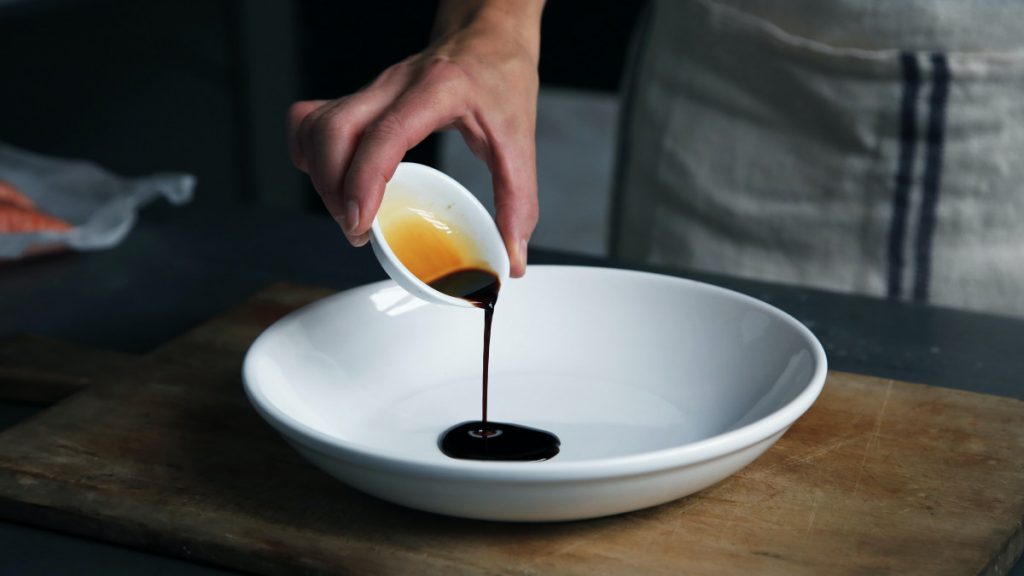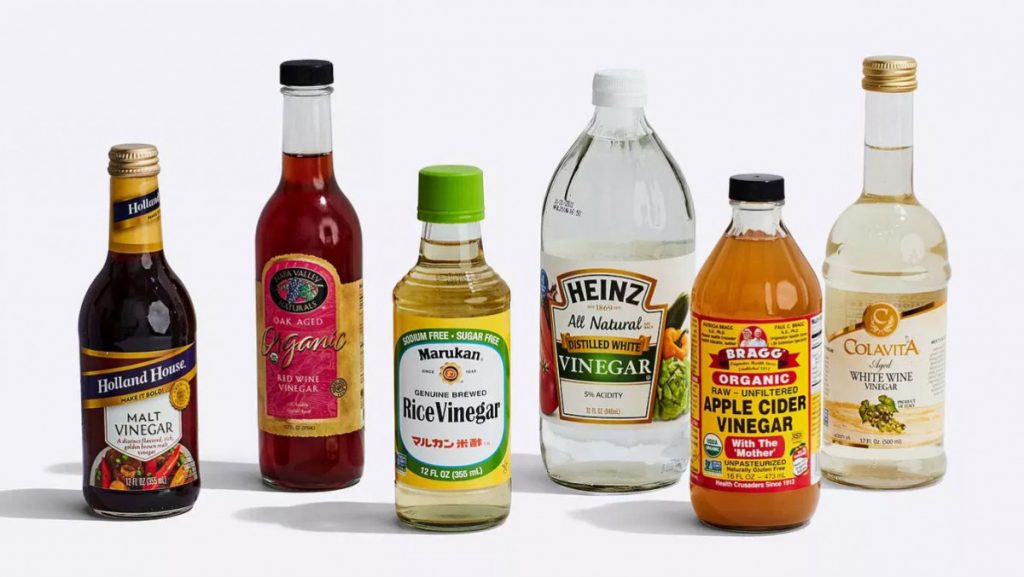Top 4 Secret Ingredients in a Master Chef's Pantry
As a private chef, my profession takes me on captivating journeys across the globe, where I have the privilege of crafting culinary experiences in the comfort of people's homes, offices, vacation villas, and even aboard private jets and yachts. With each new destination, I am granted a glimpse "behind the cabinet doors" of an array of kitchens.
A vital aspect of my role is to ensure that, regardless of where my travels may take me, I can consistently deliver dishes of the utmost quality for you and your esteemed guests. The secret to infusing your food with remarkable flavors lies in a handful of essential "secret ingredients" that I always keep on hand in my pantry.
What are the top secret ingredients in a Master Chef's pantry?

Secret Ingredient #1: High Quality Salt
Let's dive into the world of salts! Salt, my friends, is the key to culinary wonders. It's the magic ingredient that can transform a dish from lackluster to extraordinary.
However, here's a crucial lesson I implore you to remember: bid farewell to that antiquated, round cardboard container of iodized "table salt" that has seemingly been lurking in your kitchen cabinet since the days of President Abe Lincoln. Yes, it's time to part ways and throw it away—for good! You see, iodized "table salt" has absolutely no place in a kitchen worth its salt (pun intended!).
The perfect replacement for table salt is Diamond Crystal Kosher salt. Let's explore the delightful world of salts, shall we?
Kosher salt, available in coarse grind or fine grind, is a personal favorite of mine. I always lean towards the coarse grind or coarse flake variety. Why, you ask? Well, not only does this salt possess a more refined flavor compared to the mundane old round cardboard container salt, but it also lacks iodine—a potential allergen for many, including yours truly.
Now, allow me to introduce you to another salt that holds a special place in my heart: Sel Gris, also known as Grey Salt. Pictured above is a remarkable Sel Gris I acquired during a memorable trip to Marseille, France. This particular one is infused with the aromatic essence of Marseille lavender. Sel Gris is a type of sea salt, often boasting a slightly higher moisture content.
It exudes purity, cleanliness, and the brininess reminiscent of the mighty ocean itself. I adore using Sel Gris as a finishing salt, delicately sprinkling it as a garnish once the meal is plated. It also shines when employed as a flavor infusion, such as in our tantalizing Jack Daniels Sel Gris Caramel. The Sel Gris salt acts as a delightful counterbalance to the sweet richness of the Jack Daniels whiskey infused into the caramel. C'est bon, indeed!
Prepare to embark on a flavorful journey, my dear friends, as we delve into the enchanting realm of salts!
Imagine this: each type of wood carries its own distinct and subtle flavor profile that, when harmoniously combined with a top-notch salt, can create a symphony of flavors that dance upon the palate of your esteemed guests. Brace yourself, for the world of smoked salts is a vast and captivating one, with an array of offerings hailing from various corners of the globe.

Secret Ingredient #2: Peppercorns
Ah, pepper, the cherished counterpart to salt's allure. You see, my friends, without the secret ingredient of pepper to provide that perfect balance and elevate the flavors, you'd be left with nothing more than a dish that's simply salty. However, allow me to let you in on a little secret: not all peppercorns are created equal. Each variety possesses its own rightful place in the culinary realm. So go ahead, handpick a couple of your favorite peppercorns and load them up in your trusty grinder. But here's a crucial tip: always remember that pepper must be ground fresh. Bid farewell to all your pre-ground pepper and give it a good toss—it's lost its spark, with its once vibrant oils and compounds now faded away into the abyss. Embrace the aromatic wonders of freshly ground pepper, my friends, and let its transformative power infuse your dishes with irresistible charm.
Let's take a deeper dive into the fascinating world of peppercorns, shall we? Each variety brings its own unique character and flavor profile to the table, creating a symphony of tastes that can elevate your culinary creations to new heights.
First, let's explore Tellicherry Black Peppercorns. These remarkable pepper berries are carefully harvested just before reaching full maturity. Once dried, they develop distinctive wrinkly skin, giving them their characteristic appearance. Known for their robust and bold flavor, black peppercorns add a delightful kick to dishes. They find their perfect match in hearty braised dishes, such as succulent beef preparations, where their pronounced flavor can truly shine.
Moving on to the next secret ingredient White Peppercorns, we encounter a different aspect of the peppercorn journey. These peppercorns are allowed to ripen to a greater extent before undergoing a soaking process. This soaking helps loosen and remove the black outer shell, leaving behind a lighter-colored peppercorn. White peppercorns are often sought after in light-colored foods, as their subtlety blends seamlessly without drawing too much attention. What truly sets them apart is their rich, lightly-fermented flavor, which finds its place of honor in the kitchens of esteemed Asian cuisine chefs. When crafting creamy white sauces like bechamel or delicate cream sauces, the inclusion of white peppercorns adds a touch of sophistication and depth.
Now, let's meet the rebellious teenager of the secret ingredient family—the Green Peppercorns. These feisty pepper berries are harvested while still immature, bursting with vibrant and fresh flavors. Available in both dry and brined forms, the dry option tends to offer a superior flavor experience. Green peppercorns can be ground in a pepper mill or crushed using the flat side of a chef's knife against a cutting board, releasing their lively essence. Their invigorating and zesty notes make them a splendid companion for a wide range of dishes. They work wonders with fish, poultry, eggs, salads, and steamed organic vegetables, injecting a burst of freshness that tantalizes the taste buds.
Each variety, from the bold and robust Tellicherry Black Peppercorns to the elegant and lightly-fermented White Peppercorns, and finally, the spirited and fresh Green Peppercorns, offers its own unique contribution to the realm of flavors. Embrace their distinct personalities and let them transform your culinary adventures into extraordinary experiences.
Pink or Rose Peppercorns. Although not true peppercorns, they are the berries of the Baies rose plant from Madagascar. Similar in size and flavor, they were introduced to America by the French during the nouvelle cuisine movement in the 1970s. These versatile berries found their way into a multitude of dishes, adding a touch of vibrant color and a rich, sweet flavor. However, it's important to note that individuals with tree nut allergies should exercise caution, as pink peppercorns belong to the cashew family and can pose a risk to those with such allergies.
Next, we delve into the next secret ingredient realm of Malabar Black Peppercorns. Sourced from the picturesque southwestern Malabar coast of India, these peppercorns boast exceptional flavor, enticing aroma, and a satisfying level of pungency. Their richness sets them apart, making them an excellent choice for hearty entrees featuring pork or beef. When you desire a peppery punch that leaves a lasting impression, Malabar Black Peppercorns rise to the occasion.
Now, let's turn our attention to Muntok White Peppercorns. These delicate gems are derived from the inner part of shelled traditional black peppercorns. Hailing from the enchanting Bangka Island in Indonesia, Muntok White Peppercorns possess a light flavor with a distinct aroma unique to their origin. They shine brightest when paired with poultry, seafood, or lighter fare and sauces. When you seek a subtle yet captivating pepper presence, Muntok White Peppercorns gracefully take center stage.
With each variety of peppercorn, from the sweet and colorful Pink or Rose Peppercorns to the robust Malabar Black Peppercorns and the delicate Muntok White Peppercorns, there's a world of flavors awaiting your culinary creations. Embrace their individual secret ingredient characteristics and allow them to elevate your dishes to new heights of taste and distinction.

Secret Ingredient #3: Worcestershire Sauce
The intriguing history and tantalizing flavor profile of Worcestershire sauce. This tongue-twisting elixir has sparked countless debates and has become an indispensable secret ingredient flavor weapon in the realm of flavors, a must-have in every well-stocked pantry.
Worcestershire sauce, also known as Worcester sauce, traces its origins back to the vibrant city of Worcester in Worcestershire, England. It emerged during the first half of the 19th century as a creation of the ingenious chemists John Wheeley Lea and William Henry Perrins, who would later establish the renowned company Lea & Perrins. This liquid condiment, shrouded in mystery and jealously guarded recipes, has captivated taste buds around the globe.
The magical alchemy of Worcestershire sauce begins with a foundation of vinegar, lending it a tangy edge that dances on the palate. Through a meticulous process of fermentation, this elixir undergoes a transformation, harmoniously blending together an array of flavorful ingredients. Anchovies, with their deep umami essence, provide a savory backbone, while molasses imparts a subtle sweetness. Tamarind, with its distinctive tartness, adds a delightful twist, enhancing the complexity of the sauce. As the flavors meld, the essence of onion and garlic infuse the concoction, adding depth and aromatic allure. These elements, combined with a carefully selected array of seasonings, contribute to the unmistakable character and irresistible allure of Worcestershire sauce.
The result is a symphony of flavors, a harmonious balance of savory and sweet, with a tantalizing tang that awakens the taste buds. Worcestershire sauce is a true secret ingredient flavor enhancer, elevating dishes with its unique blend of ingredients. It adds a touch of richness to stews, marinades, and sauces, lends depth to meat dishes, and can even elevate a humble hamburger to new heights of deliciousness. Its versatility knows no bounds, transcending borders and cuisines.
Stock your pantry with the beloved elixir of Worcestershire sauce. Let its complex flavors take center stage in your culinary endeavors, transforming ordinary dishes into extraordinary delights. Explore the vast possibilities that this hotly debated condiment has to offer, and allow its distinct character to ignite your taste buds with joy and satisfaction.
Use Lea & Perrins Worcestershire Sauce to enhance the depth of umami, for a wide variety of recipes, such as meat marinades, soups & stews, in sauces, Caesar salad dressing, and of course my favorite.. Bloody Mary's! Add a dash of Lea & Perrins to your sauteed mushrooms to really add a huge pop of mushroomy flavor...

Secret Ingredient #4: Vinegar
One element that should never be overlooked is a punch of acidity. A well-chosen vinegar can work wonders, ensuring that a dish never falls flat or becomes disappointingly "flabby" in the mouth. Vinegar's versatility knows no bounds, from enhancing salad dressings to tenderizing meats and even adding a delightful pop of flavor to your favorite BBQ sauce.
The best part? A few staple vinegars in your pantry are virtually indestructible, standing the test of time without spoiling. Just remember to check the labels, as some brands may require refrigeration after opening to maintain freshness.
Let's explore the world of vinegars, starting with the beloved Balsamic Vinegar. Its rich, dark elixir elevates even the simplest salad dressings to new heights, and it can also shine as a stand-alone secret ingredient accompaniment to a slice of good quality crusty bread. For a delightful low-fat dessert, try drizzling aged balsamic vinegar over fresh strawberries and finish with a crack of black Malabar pepper. The resulting symphony of flavors is sure to please.
Next up is Apple Cider Vinegar, renowned for its robust flavor and health benefits. This vinegar reigns supreme in homemade pickles and brings a unique character to a wide range of dishes and sauces. It also serves as the secret behind that mysterious "punch" in a well-crafted aioli.
In the realm of all-purpose vinegars, Red Wine Vinegar steals the show. Its versatility knows no bounds, adding depth and tang to salad dressings, sauces, and marinades. While white wine vinegar, champagne vinegar, and sherry vinegar each have their merits, I find that red wine vinegar shines the brightest, elevating dishes with its complex flavors.
When it comes to Asian cuisine, Rice Wine Vinegar takes the secret ingredient spotlight. With its lighter and sweeter profile, it adds a delicate touch to various dishes. It is a must-have for those seeking to capture the authentic flavors of Asian cooking. It's important to note the distinction between seasoned rice vinegar and rice wine vinegar, as seasoned rice vinegar has been infused with additional salt or sugar to impart more pronounced flavors. For the true essence of rice vinegar, reach for rice wine vinegar.
So, my fellow culinary enthusiasts, stock your pantry with these exceptional vinegars. Embrace their diverse flavors and embrace the endless possibilities they bring to your dishes. Whether you're whisking up a vibrant dressing, marinating succulent meats, or adding that final touch to a delectable sauce, these vinegars will be your trusted companions on your flavorful journey. Remember, a touch of acidity can transform a good dish into an extraordinary one. Let the vinegars be your flavor boosters, enlivening your culinary creations with their vibrant and irresistible charm.